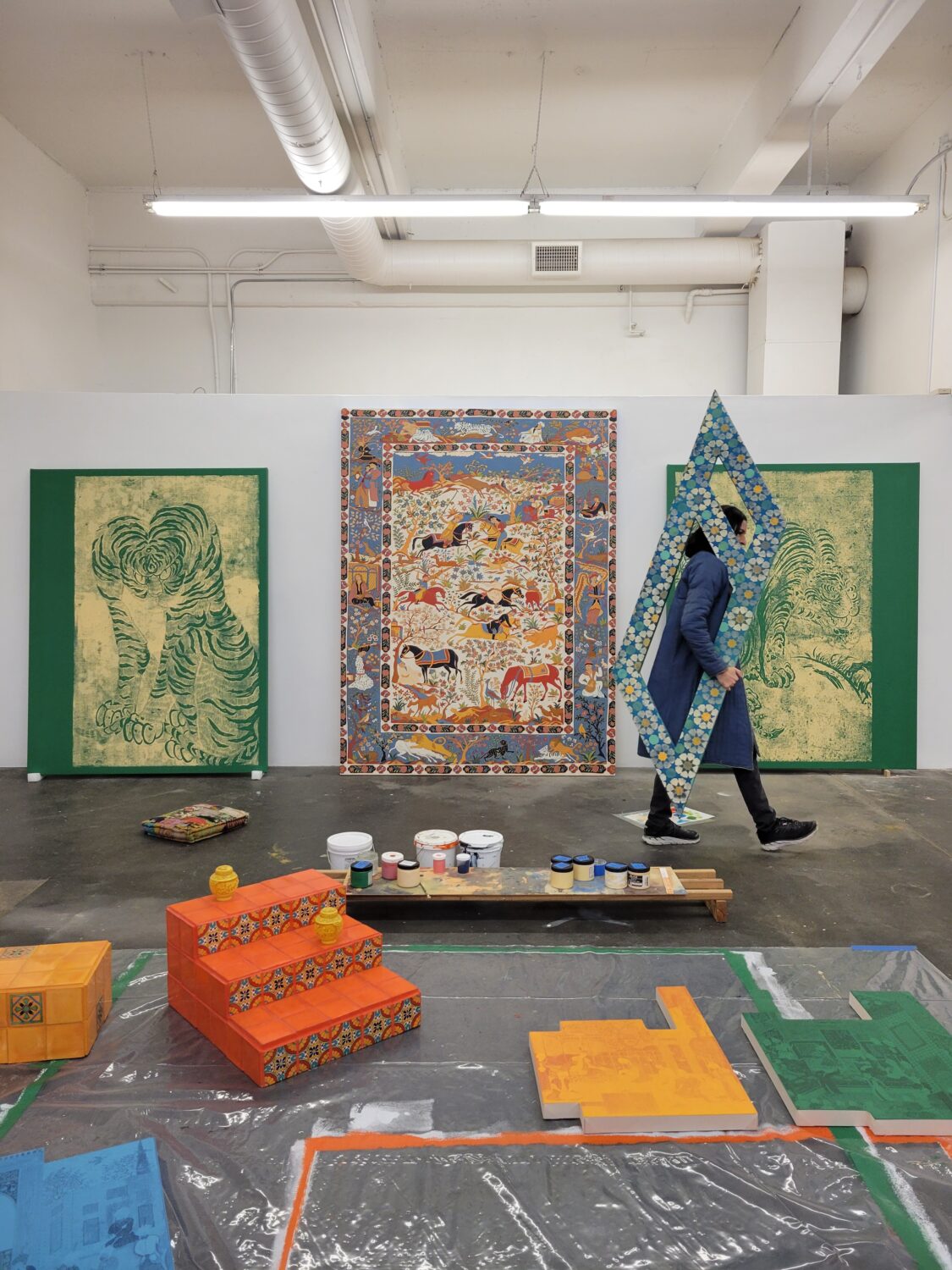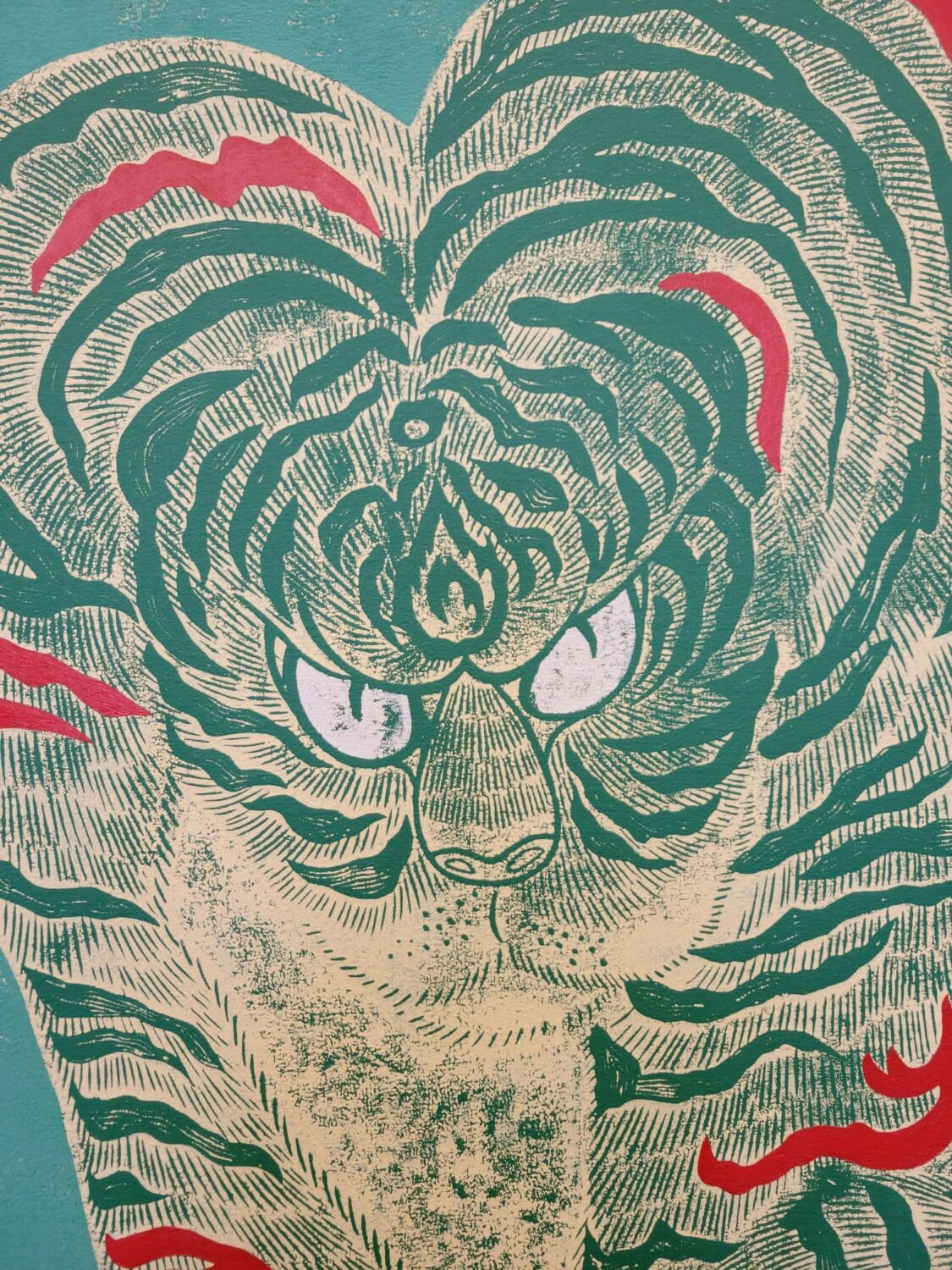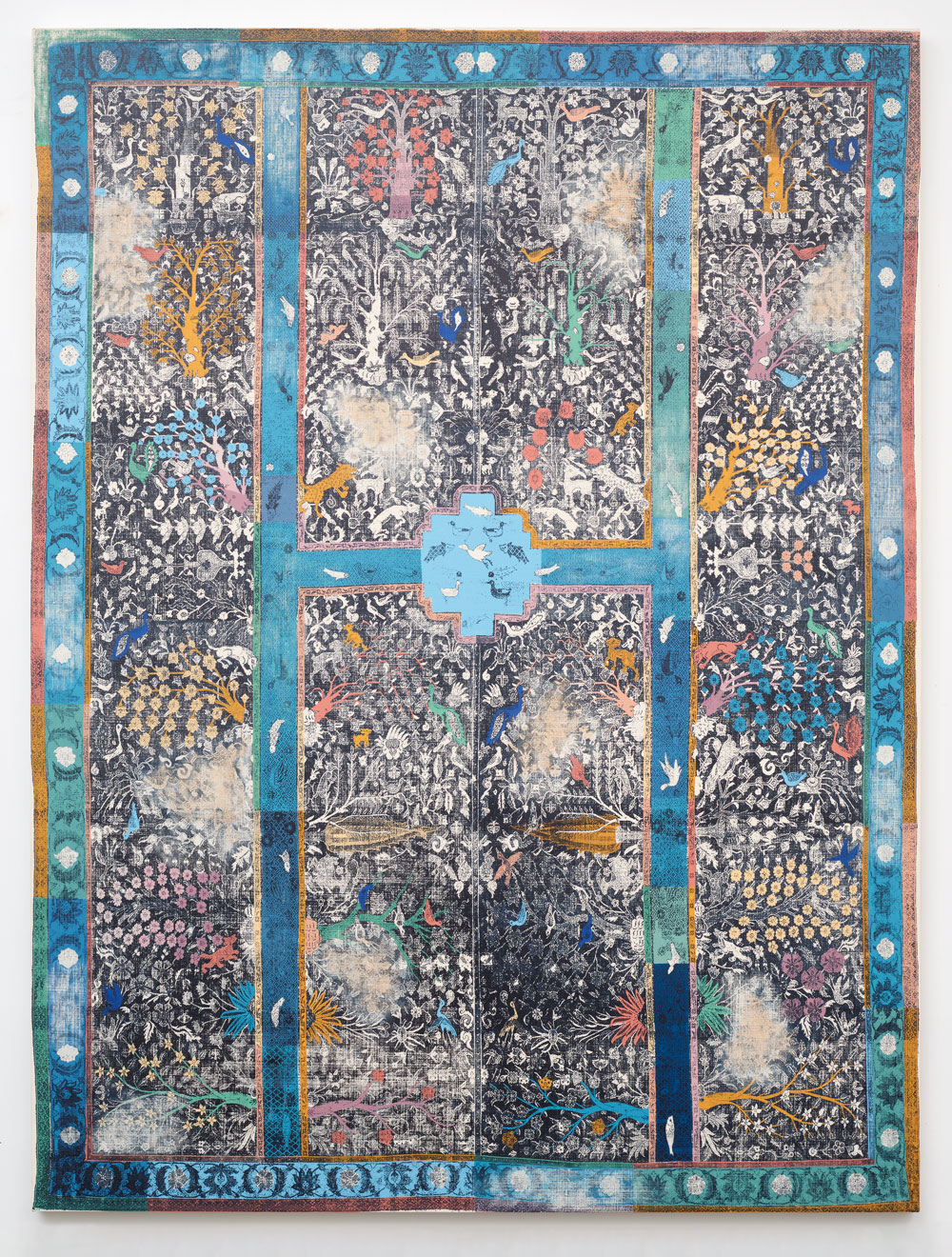Interview: British-Iranian Artist Kour Pour On Plural Origins & Entwined Histories
By Something CuratedLos Angeles-based British-Iranian artist Kour Pour’s meticulously composed and delicately rendered artworks intersect diverse material and aesthetic traditions, embracing forms and techniques from numerous cultures and time periods. Pour’s truly global vision weaves together representational imagery, abstract patterning, and ornamental elements to create new hybrid artworks. The artist explains, “When someone asks me where home is, the answer is multi-layered. And this experience of holding multiple identities and truths becomes a part of my art.” From 24 March to 30 April 2022, Gallery 1957’s London site will present an exhibition of works by Pour, the artist’s first solo show in his country of birth. New works on view include silkscreen prints based on imagery from illustrated texts of the Persian epic Shahnameh (The Book of Kings) by the poet Ferdowsi, alongside a series exploring the cultural significance of the tiger. To learn more about Pour’s compelling practice and his upcoming exhibition, Something Curated spoke with the artist.

Something Curated: Can you give us some insight into your background and how you first became interested in art-making?
Kour Pour: I grew up in the UK in a mixed-race family. My mother was British, and my father is an Iranian immigrant. We celebrated both Christmas and Persian New Year and drank English breakfast tea while my father burned esphand seeds to protect us from the evil eye. I moved to the US in 2005 at age 17, a year after my mother passed away, and attended a community college while I applied to a recording school. I was introduced to contemporary art by a professor and transferred to art school instead.

SC: What is the thinking behind the selection of works included in your upcoming exhibition at Gallery 1957?
KP: The selection of works at Gallery 1957 more or less mirrors the setup I have at my studio in LA. My studio is full of different bodies of work where I’m painting, printmaking, building sculpture, or experimenting with materials like spices and incense. This will be my first UK exhibition, so I wanted to display a range of my work for the British audience. I also feel that the subject matter in the show is related to the intertwined histories of the UK, Europe, and Asia.

SC: Could you expand on your exploration of the tiger as a symbol of cultural exchange?
KP: The tiger is an iconic image that pops up in many cultures across Asia. There are depictions of tigers in Persian art that were influenced by Chinese painting. And then there are related depictions of tigers within East Asia, between countries like China, Korea, and Japan. Artists used elements from other cultures’ styles, creating new composite images to the point that curators at museums have a hard time tracing the origins of the paintings. I’m interested in these histories and breaking the idea of singular identity or origin.

SC: How would you describe your approach to using colour?
KP: I’m interested in the way colour palettes, much like the imagery I use in my work, can reference a particular culture or cultural history. I remember reading that Europeans would go to places like Bengal and ask weavers to use softer, more muted palettes to appeal to European tastes. So, I often mix palettes from one region with imagery from another, which can create an unsettling or unfamiliar feeling.

SC: What attracts you to the unconventionally shaped canvases you work on?
KP: In 2015, I started a project where I edited the catalogue from MoMA’s Inventing Abstraction 1910-1925 exhibition. I annotated the catalogue essays and cut and pasted examples of artworks that far preceded those that MoMA claimed were the beginnings of abstraction. On one page, I paired Persian miniature paintings with the likes of Frank Stella, showing clear connections to modern art from the West with art from the rest of the world. My shaped canvas paintings, formed by silk-screening pages from the Shahnameh (the most famous work of Persian literature) and removing the boxes of text, are another way of showing that relationship.

SC: What are you currently reading?
KP: I’m reading Suketu Mehta’s This Land Is Our Land: An Immigrant’s Manifesto. I’m drawn to stories of immigration – I’m an immigrant, my family are immigrants, and so are many of my loved ones. The book has a statistic that if there were a country comprised solely of immigrants, it would be the fourth largest in the world in terms of population, and that number will only continue to grow. The experience of immigration connects people from all different cultures because, often, they find themselves in similar circumstances. Those points of cross-cultural connection are powerful.
Feature image: Kour Pour, Stories Told in a Language I Don’t Understand, 2022. Courtesy the artist and Gallery 1957